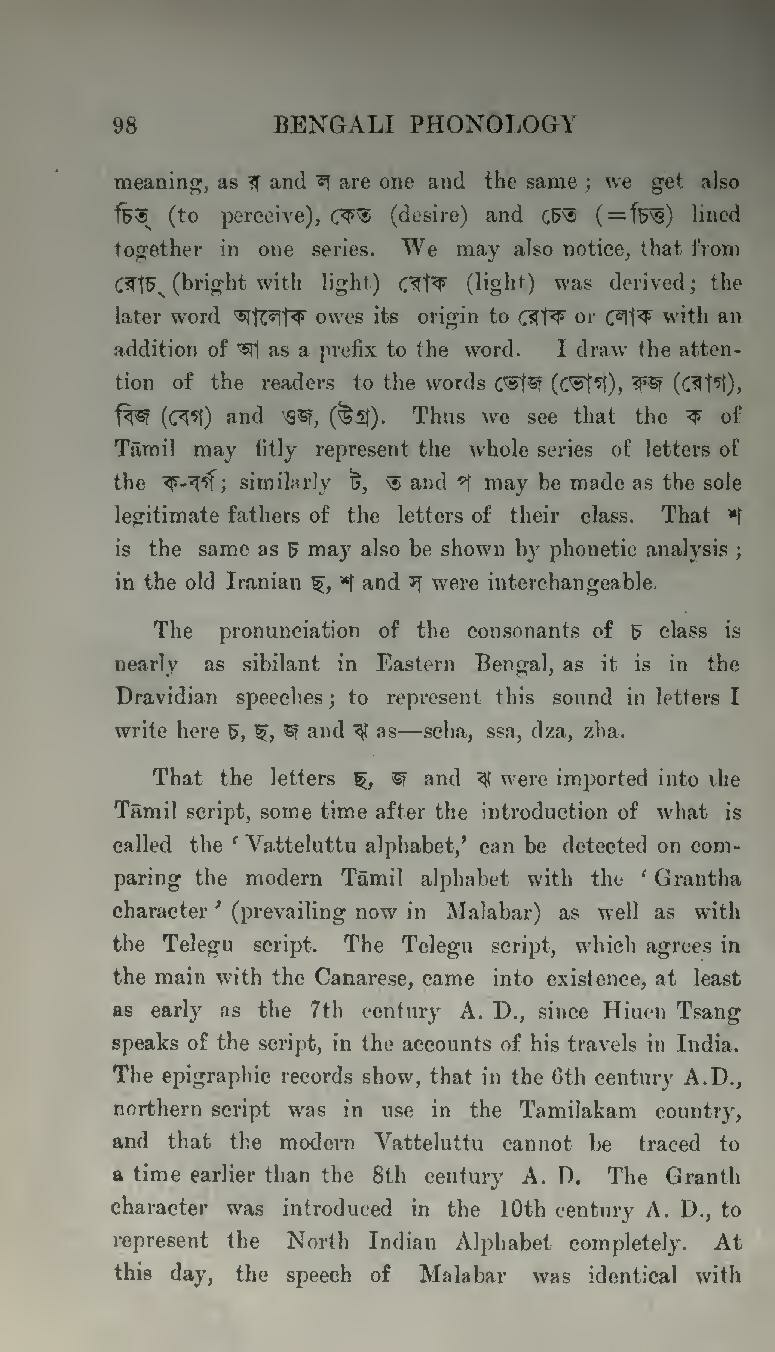meaning, as র and ল are one and the same; we get also চিত্ (to perceive), কেত (desire) and চেত (= চিত্ত) lined together in one series. We may also notice, that from রোচ্ (bright with light) রোক (light) was derived; the later word আলোক owes its origin to রোক or লোক with an addition of আ as a prefix to the word. I draw the attention of the readers to the words ভোজ (ভোগ), রুজ (রোগ), বিজ (বেগ) and ওজ, (উগ্র). Thus we see that the ক of Tāmil may fitly represent the whole series of letters of the ক-বর্গ; similarly ট, ত and প may be made as the sole legitimate fathers of the letters of their class. That শ is the same as চ may also be shown by phonetic analysis; in the old Iranian ছ, শ and স were interchangeable.
The pronunciation of the consonants of চ class is nearly as sibilant in Eastern Bengal, as it is in the Dravidian speeches; to represent this sound in letters I write here চ, ছ, জ and ঝ as—scha, ssa, dza, zha.
That the letters ছ, জ and ঝ were imported into ihe Tāmil script, some time after the introduction of what is called the 'Vatteluttu alphabet,' can be detected on comparing the modern Tāmil alphabet with the 'Grantha character' (prevailing now in Malabar) as well as with the Telegu script. The Telegu script, which agrees in the main with the Canarese, came into existence, at least as early as the 7th century A. D., since Hiuen Tsang speaks of the script, in the accounts of his travels in India. The epigraphic records show, that in the 6th century A.D., northern script was in use in the Tamilakam country, and that the modern Vatteluttu cannot be traced to a time earlier than the 8th century A. D. The Granth character was introduced in the 10th century A. D., to represent the North Indian Alphabet completely. At this day, the speech of Malabar was identical with
